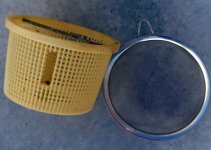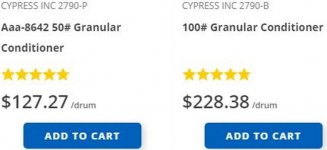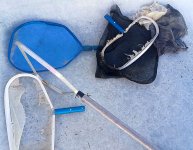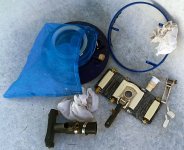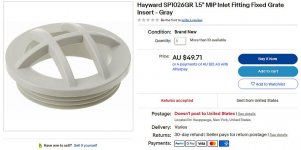The anti-bird wire probably won't be needed at L2.
Ah. I didn't think of anti-bird wire!
If that's what the baling wire is for, it's genius. The birds can't grasp it because it's too thin... but it's just high enough above the thicker cable that it blocks it.
That's ingeniously simple! (if that's what it is for)
What I love about ingenious simple solution is that they are inexpensive, long lasting, and yet, they work.
Sort of like my home carbonation system made out of a beer-keg tank and some quick connects, valves, and pressure hoses...
( I need a source for those fat-mouthed soda bottles - the dollar store doesn't sell 'em anymo')
(the fat mouth enables ice cubes to be put inside - where gas dissolves better in COLD liquids)

I like it even better when I re-purpose inexpensive but long lasting tools, such as using these MIG-welding gloves for weeding the poison oak.

They exemplify the DIY pool equipment I'm hoping to learn how to source, in that they're already made for another purpose, and they're inexpensive, but, get this... they cost LESS than garden gloves do, and most gardening gloves are too thin or too short - these are perfect!
a. Inexpensive
b. Sturdy
c. Available
and... most important...
d. They do the job well

Around a pool there is no dearth of replacing expensive cheap solutions...
For example, I'm trying to figure out a horsefly solution as we type...
I've already solved houseflies inside the house... with an ingenious solution that's simple and effective - but it won't work around a pool.
You always want to go after their weakness... with your strength... and flies are fast fliers, right?
Well, what's their weakenss?
I read a lot about WWII bombers hating flak when bombing cities, where their weakness was they couldn't avoid a spray of flak where the holes the flak puts into the plane's important parts is the payload, right?
So I made a simple housefly spray that is flak with a payload that clogs up the holes in the side of houseflies.
It works outside and in the house but not at the pool because it's a spray bottle of water with a few drops of dish detergent in it.
The spray is the flak that they can't avoid and the dish detergent is the payload that suffocates the bugs' spiracles (breathing holes).
KISS.
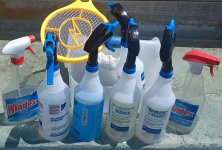
The old Windex bottles, for whatever reason, stop working after a couple of years.
That's why I went for the big bucks, opting for the 2-dollar spray bottles!

The problem though with horseflies is they're not cooped up in a kitchen so they fly further away before you get out the 88's.
And worse, the soapy water isn't likely a good thing for the pool.
I did try 30% acetic acid and bleach, but the horseflies seem impervious to that kind of flak.
Googling, I found out the horseflies don't go for carbon dioxide like mosquitoes do, but for heat.
And, apparently, once they land on a hot object, they never fly down - they always fly up.
The contraptions people build, as a result of knowing thine enemy look like
this store bought H-Trap.

What do you use to get rid of horse flies around the pool?




